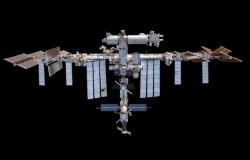The team of ten Argentine students belonging to the Technological Institute of Buenos Aires (ITBA) finished among the best in the world at the CanSat Competiton, an annual event of international relevance that consists of developing and testing a satellite prototype and is sponsored by the POT.
The ITBA students, the only representatives of Argentines over 150 participantsfinished in fifth place with a score of 99.1059% over a maximum of 100%.
It is the first time that an Argentine team has gone so far in this competition, which is why it won the jury recognitionwhich is only obtained by the participants who make up the top five.
First place went to students from a university in Wroclaw, Poland, (99.8859%). Then came: United States (99.5227%); another group of Polish students (99.4271%), another group of students from the United States (99.1410%).
The team is made up of Victoria Klang (team leader), Nicolás Professi, Nicolas Beade, Facundo Di Toro, Micaela Soledad Perillo, Dante D’Agostin, Nicolás Martone, Ezequiel Bolzicco, Franco Iotti and Matías Bergerman. They are third-year students of ITBA who are studying different careers; They are between 21 and 22 years old and were the only Argentine representatives of the CanSat Competition. They were among the best five of 40 finalists, of which half are students from American universities and the rest, participants from different countries.
“It was total madness. Our bodies trembled. We had tears of happiness. There were only five prizes, five winners. We enter the top five“, commented Victoria Klang, third-year Industrial Engineering student at ITBA and general leader of the Argentine team, in exclusive dialogue with Clarion from the United States.
The students designed the Argentine CanSat according to the guidelines of the American Astronautical Society (AAS), the entity that organized the event and was sponsored by NASA.
To do this, they created a miniature satellite prototype with dimensions similar to that of a can: it measures about 10 centimeters in diameter, another 30 centimeters high, and weighs less than 900 grams. Its exterior is covered by ABS and carbon fiber. Its mission is to simulate the general challenges facing a real satellitewhose cost had to be less than $1,000.
The satellite had to reach 725 meters in height and carry an egg inside: Once launched that distance, it had to land safely, without breaking once it hits the ground. The egg has a parachute: once launched, it had to reach the ground intact.
 A team of Argentine students from ITBA achieved 5th place in an international competition sponsored by NASA.
A team of Argentine students from ITBA achieved 5th place in an international competition sponsored by NASA.In Buenos Aires, ITBA students had to overcome three preliminary rounds among 150 universities from around the world. They achieved grades of 98%, 96% and 100%, respectively, out of a maximum score of 100%. In this way, they entered the grand finale to launch the satellite at a launch field this weekend in the state of Virginia (United States), among 40 participants from different universities.
The final took place in a series of tests from Thursday, June 6 to Sunday, June 9 at the Valley AeroSpace Team, an exclusive open field dedicated to the launch of rockets of all types, located in the state of Virginia, in the southeast of this country. in North America. On Friday, which consisted of testing, review of the structure and subsystems and the operations manual, They got a score of 100 out of 100 and came first.
 The hope placed in the rocket in the run-up to the decisive launch.
The hope placed in the rocket in the run-up to the decisive launch.But the decisive test consisted of the launch of the Cansat satellite prototype and took place on Saturday. “We had doubts about where we were. We had good things and also bad things: in fact, our parachute got tangled. We were very doubtful but the communication and telemetry worked. This was of a lot of value, of a lot of points,” Klang revealed.
The students repeated the CanSat launch in a second instance. “We were all hugging, we did the countdown and at the count of 5, 4, 3, 2, 1, we launch the rocket. With our antenna and a GPS we were able to identify and recover it,” Klang said.
“We returned with our CanSat to the table, all nervous, and we saw that the egg was perfect. We felt immense emotion at that moment. We showed them that our CanSat was intact: it was perfect, in good condition,” he added.
After the launch on Saturday, the students gave the last presentation this Sunday, at the Post Fly Review (Post Flight Report). “We presented the report today, it came out great: we told about our mistakes, what we learned. We also answered the jury’s questions well. At the end, they congratulated us, they told us that it was an excellent presentation“said the leader of the Argentine project.
 The rocket with the Argentine Cansat exceeded 700 meters.
The rocket with the Argentine Cansat exceeded 700 meters.ITBA students are part of the Students for the Exploration and Development of Space (SEDS), an international student organization founded in 1980 at the Massachusetts Institute of Technology (MIT). In Argentina, the ITBA officially represents the SEDS.
Then came the final ceremony. Each of the ten members of the Argentine team received a diploma in recognition for having achieved fifth place. The students, happy to make history after being among the five best. Argentine pride.










